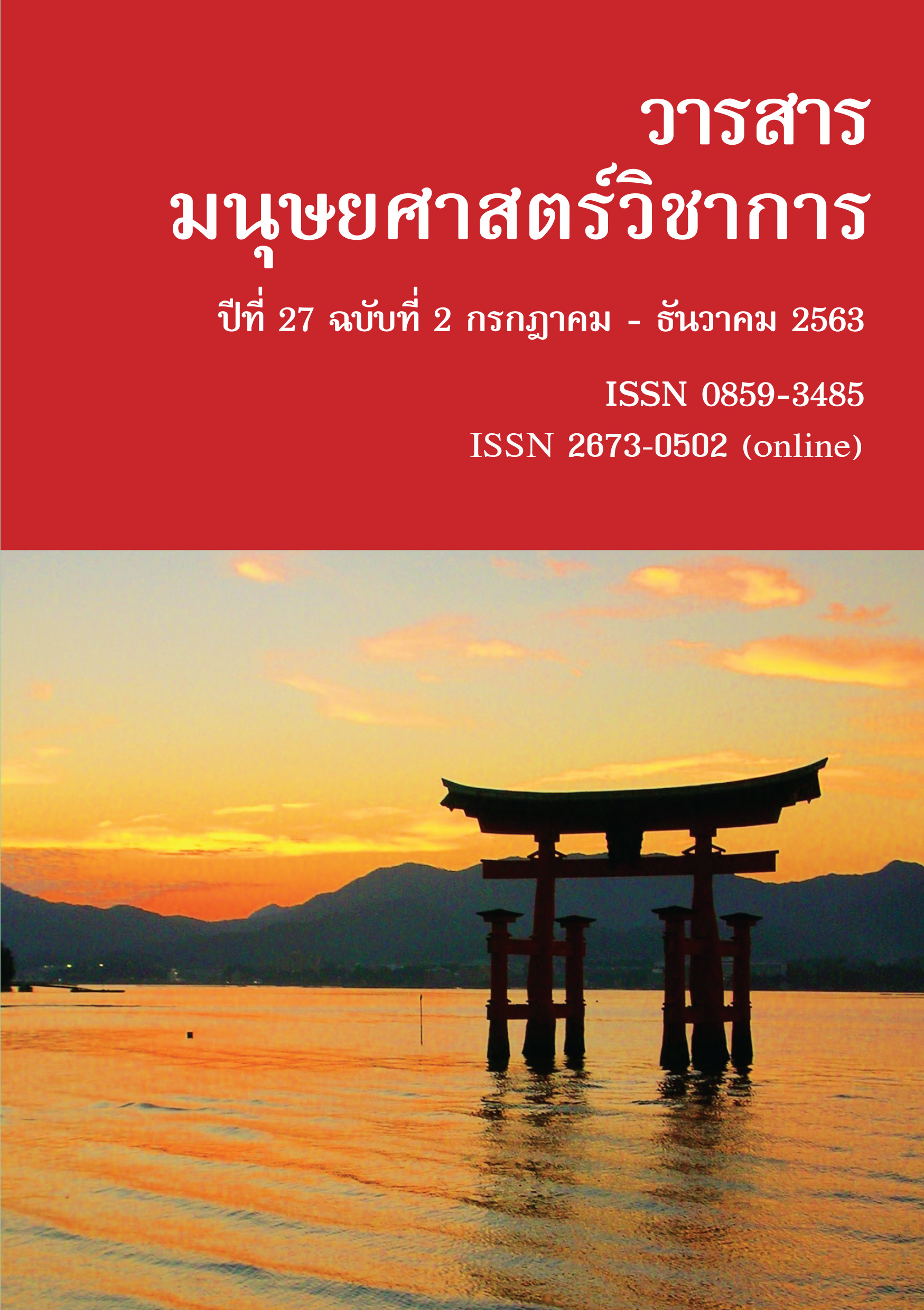Move Analysis of Abstracts of Agricultural Science Articles
Main Article Content
Abstract
Writing an English research article for writers whose first language is not English seems to be a very difficult task. To overcome this problem, the objective of this study was to investigate the occurrence of rhetorical move structures in abstracts in agricultural science (food science, plant science, and animal science) in order to identify moves and move sequences in abstracts in agricultural science. Two workshops were performed to see the extent to which the proposed move model can be applied. Ninety abstracts from three agricultural research journals were analyzed using the proposed model to identify rhetorical move structures. The analysis revealed the rhetorical move structures in the agricultural research articles consisted of 13 moves. The moves and move sequences are proposed to be used for analyzing abstracts in agricultural science journals. The findings can be applied in analyzing moves and move patterns for training novice writers in writing abstracts for journal articles in agricultural science and other related fields.
Article Details
References
Aryubkhen, W. (2011). Evaluation in research article abstracts in the narrative and hard sciences. Bangkok: Kasetsart University.
Basturkmen, H. (2012) A genre-based investigation of discussion sections of research articles in Dentistry and disciplinary variation. Journal of English for Academic Purposes. 11: 13-144.
Bhatia, V. K. (1993). Analysing Genre–Language Use in Professional Settings/Vijay K. Bhatia. – London: Applied Linguistics and Language Study Series. In: Longman.
Bhatia, V. K. (1997). Genre-Mixing in Academic Introductions. English for Specific Purposes 16: 181-196.
Brett, P. (1994). A Genre Analysis of the Results Section of Sociology Articles. English for Specific Purposes 13: 45-57.
Bruce, I. (2008). Cognitive genre structures in Methods sections of research articles: A corpus study. Journal of English for Academic Purposes. 7: 38-54.
Gledhill, C. (2000). The discourse function of collocation in research article introductions. English for Specific Purposes 19: 115-135.
Golebiowski, Z. (2009). Prominent messages in Education and Applied Linguistic abstracts: How do authors appeal to their prospective readers? Journal of Pragmatics 41: 753-769.
Homes, R. (1997). Genre Analysis, and the Social Science: An Investigation of the Structure of Research Article discussion Sections in Three Disciplines. English for Specific Purposes 16: 321-337.
Kanoksilapatham, B. (2005). Rhetorical structure of biochemistry research articles. English for Specific Purposes 24: 269-292.
Kanoksilapatham, B. (2012). Structure of research article introductions in three engineering subdisciplines. The IEEE Transactions on Professional Communication 5(4): 294-309.
Kanoksilapatham, B. (2015). Distinguishing textual features characterizing structural variation in research articles across three engineering subdiscipline corpora. English for Specific Purposes 37: 74-86.
Lorés, R. (2004). On RA abstracts: from rhetorical structure to thematic organisation. English for Specific Purposes 23: 280-302.
Lim, J. (2006). Method sections of management research articles: A pedagogically motivated qualitative study. English for Specific Purposes 25: 282-309.
Lim, J. (2010). Commenting on research results in applied linguistics and education: A comparative genre-based investigation. Journal of English for Academic Purposes 9: 280-294.
Nakmaetee, N. (2012). An English Academic Writing Support System by Using Natural Language Processing Technique. Bangkok: King Mongkut’s University of Technology North Bangkok.
Nwogu, K. N. (1997). The Medical Research paper: Structure and Functions. Pergamon 16: 119-138.
Oneplee, J. (2008). Evaluation in research article abstracts in the narrative and hard sciences. Nakhon Pathom: Mahidol University.
Ozturk, I. (2007). The textual organization of research article introductions in applied linguistics: Variability within a single discipline. English for Specific Purposes, 26: 25-35.
Parkinson, J. (2011). The Discussion section as argument: The language used to prove knowledge claims. English for Specific Purposes. 30: 164-175.
Pasavoravate, Y. (2011). Genre Analysis of Thesis and Dissertation Abstracts in Linguistics Written by Students in Thailand and Students in England. Chulalongkorn University.
Prabripoo, S. (2009). Evaluation in research article abstracts in the narrative and hard sciences. Nakhon Pathom: Mahidol University.
Peacock, M. (2002). Communicative moves in the discussion section of research articles. Pergamon 30: 479-497.
Rubio, M. ( 2011). A pragmatic approach to the macro-structure and metadiscoursal features of research article introductions in the field of Agricultural Sciences. English for Specific Purposes. 30: 258-271.
Rungnaphawet, R. (2016). Moves, Move sequences, and Move Cycling in Computer Engineering and Electrical Engineering Research Article Abstracts. Chulalongkorn University Language Institute.
Saengsai and Pramoolsook. (2017). Move Analysis of Science and Engineering Phd Abstracts: Viariations between the Two Disciplines in a Thai University. Burapha University.
Samraj, B. (2002) Introductions in research articles variations across disciplines. English for Specific Purposes 21: 1-17.
Samraj, B. (2005). An exploration of a genre set: Research article abstracts and introductions in two disciplines. English for Specific Purposes 24: 141-156. 7: 55-67.
Samraj, B. (2008). A discourse analysis of master’s theses across disciplines with a focus on introductions. Journal of English for Academic Purposes
Shi, H. (2010). Lexical bundles and moves in agricultural science research articles.
Stotesbury, H. (2003). Evaluation in research article abstracts in the narrative and hard sciences. Journal of English for Academic Purposes 2: 327-341.
Swales, J. (1990). Genre Analysis, English in academic and research settings. London: Cambridge University Press, UK.
Tessuto, G. (2015). Generic structure and rhetorical moves in English-language empirical law research articles: Sites of interd isciplinary and interdiscursive cross-over. English for Specific Purposes 37: 13-26.
Tucker, P. (2003). Evaluation in the art-historical research article. Journal of English for Academic Purposes 2: 291-312.
Wongwiwant, T. (2016). Move Analysis and Lexical Bundle Analysis of Conference Abstracts: A Case Study of Thailand TESOL International Conferences. Bangkok: Thammasat University.


